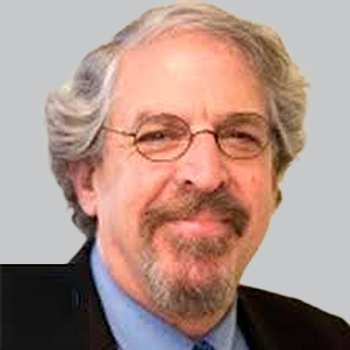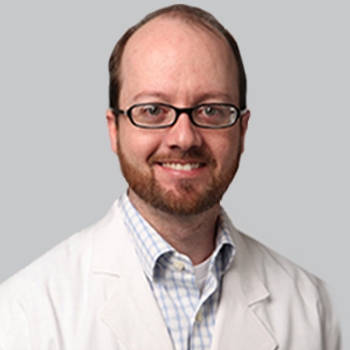
Seizing Hope: UCB’s Advances in Epilepsy and Rare Syndromes
Key Takeaways
- Significant progress in rare epilepsy syndromes is attributed to research, collaboration, and advocacy, with a focus on tailored treatments for specific conditions.
- Genetic and molecular insights have enabled effective therapies like fenfluramine, reducing seizures in rare epilepsy populations.
Hugo Xi, head of Medical Neurology at UCB, discussed the company’s groundbreaking research, innovations in epilepsy care, and the company’s commitment to advancing treatments for rare syndromes at the 2024 AES Annual Meeting.
In recent years, the epilepsy community has made significant strides in improving care for rare epilepsy syndromes through a combination of research advancements, collaboration, and advocacy efforts. There has been a growing emphasis on creating treatments tailored to specific rare epilepsy syndromes, such as Lennox-Gastaut syndrome (LGS), Dravet syndrome (DS), and CDKL5 Deficiency Disorder. Advances in understanding the genetic and molecular causes of these syndromes have paved the way for treatments like fenfluramine (Fintepla; UCB), which have shown efficacy in reducing seizures in these populations.
Educational initiatives by advocacy groups, medical societies, and industry leaders have also helped improved awareness about rare syndromes among healthcare providers and the general public. Events like the recently concluded American Epilepsy Society (AES) annual meeting, held October 6-10 in Los Angeles, California, provide platforms for sharing the latest research, connecting experts, and advocating for improved care.
During this year’s AES meeting, Hugo Xi, head of Medical Neurology at UCB, sat down to discuss the company’s initiatives and research being presented at the meeting. In the conversation, UCB’s broader epilepsy portfolio and pipeline were discussed, including advancements in gene therapy and an innovative inhalation device for rapid seizure termination. Above all, the conversation emphasized UCB’s dedication to collaboration with healthcare providers, patient advocacy group, and policymakers, as well as its commitment to driving innovation in epilepsy and rare syndromes through significant investments in research and development.
NeurologyLive: Discuss some of the data being presented here at AES and its significance
Hugo Xi: Yes, this is my first AES meeting, and of course, UCB has a lot of exciting things going on. As the new head of the medical field, what I’m most excited about is the breadth and depth of our scientific data and contribution to this meeting. We have a total of 32 posters this year, and they cover a wide range of topics—from quality of life for patients with epilepsy to efficacy and safety studies, and even our future, exciting pipeline.
These data come from multiple sources, such as preclinical studies, clinical studies, and real-world evidence. You asked me about key findings. If I may, I’ll start with something related to patients and how epilepsy affects their daily lives. One study we did involved focus groups and interview studies, where we looked at prolonged seizures. For patients who recently experienced prolonged seizures, we found something astonishing: almost 75% of patients or caregivers caring for those adult patients with prolonged seizures reported experiencing depression and anxiety. In fact, 60% of them are either taking medication or actively seeking help to manage their mental health. Clearly, that represents huge suffering for this patient group.
We also conducted an internet-based survey looking at the quality of life of patients with developmental and epileptic encephalopathies (DEE). Similarly, 44% of those patients and caregivers reported daily interruptions in their lives. So again, these studies motivate us at UCB to work even harder to find solutions for these situations. That’s the first set of findings I’d like to highlight—the focus on the patients.
The next set of findings focuses on Fintepla, which is part of our current portfolio. A very exciting dataset we shared came from a follow-on open-label extension study. This involved patients who had been in a placebo group during a Phase 3 trial. Now they had the opportunity to use Fintepla after the clinical trial, and we analyzed the data. Amazingly, those patients who were on placebo before now showed very similar effectiveness in reducing seizure frequency compared to the group originally receiving the drug in the Phase 3 trial. This tells us two things: one, it confirms that Fintepla is very effective for Lennox-Gastaut syndrome (LGS) patients. And two, it demonstrates how quickly the medication’s onset impacts the patients. We are very thrilled with these results, as reported here.
Can you tell us about UCB’s epilepsy portfolio and the company’s approach to research and development in epilepsy and rare syndromes?
At this conference, many refer to us as “the epilepsy company.” We’ve been in this field for over three decades and consistently invest heavily in research and development. In fact, we dedicate over 30% of our revenue to R&D, which is a significant percentage for a company of our size. With this investment, we’ve been able to use AI and advanced screening techniques. For example, we screened about one million compounds and studied over 500 protein targets through what we call an AI digital pathway or pathologic bio-laboratory network. This is certainly a fascinating new area of development for us.
Additionally, we are exploring disease-modifying therapies, such as gene therapy. This is another exciting avenue we’re pursuing.
How has the field changed over the last decade or so?
As someone new to this field, I’ve observed several changes based on what others have shared with me. First, there is much stronger collaboration among different stakeholders—healthcare providers, patients, caregivers, patient advocacy groups, and industry players. We all understand the significant unmet medical needs and the suffering that patients endure, so we’re working together more closely to find solutions.
Second, the industry has become more focused on refractory and drug-resistant epilepsy, particularly rare syndromes. UCB leads the field here with Fintepla, which is approved for LGS patients and patients with Dravet syndrome. We also have ongoing studies for CDKL5 deficiency disorder (CDD). Other companies are also exploring this space, which is encouraging.
Third, there’s growing excitement about gene and gene-modifying therapies. While these are still a few years away, they hold tremendous promise for the future.
What is next for UCB and its pipeline?
Not only do we have a strong current portfolio, but we also have an exciting pipeline. As I mentioned earlier, we are looking at Fintepla’s potential for CDKL5 deficiency disorder. Another very exciting project is the development of alprazolam delivered through an innovative Staccato inhalation device for prolonged seizure patients.
We presented data here based on a Phase 1 study that compared alprazolam delivered via Staccato inhalation versus oral administration. The results are impressive: the inhalation method allows patients to reach peak concentration (Tmax) within two minutes, compared to 45 minutes with oral delivery. This means we can potentially provide rapid and early seizure termination, a concept we call “REST.” This is really exciting.
Any last thoughts on AES and the emerging advances in epilepsy?
Thank you again for the opportunity. I think we covered a lot of ground. UCB is very proud to sponsor AES and remains committed to the epilepsy and rare syndrome community. We continue to bring educational programs and investment to this space. Whether through our existing portfolio or pipeline, we aim to partner with healthcare providers, policymakers, and patient advocacy groups to achieve our ultimate goal: disease-modifying therapies for the community. While this will take time, we are committed to making it happen.
Newsletter
Keep your finger on the pulse of neurology—subscribe to NeurologyLive for expert interviews, new data, and breakthrough treatment updates.


































